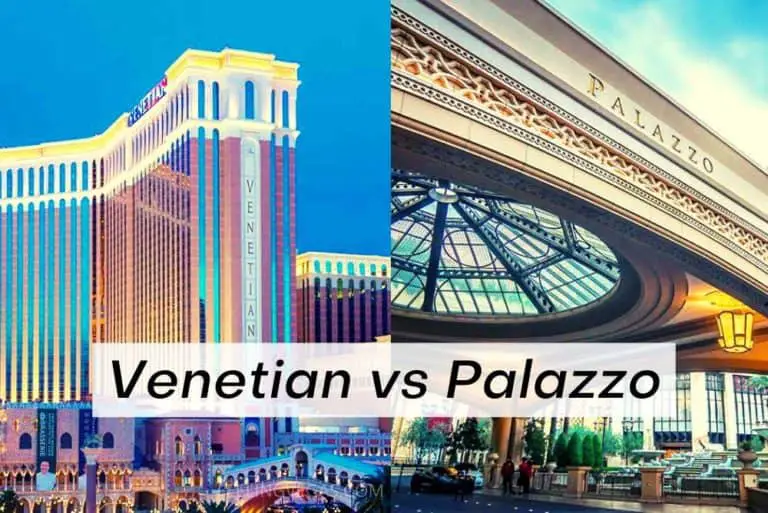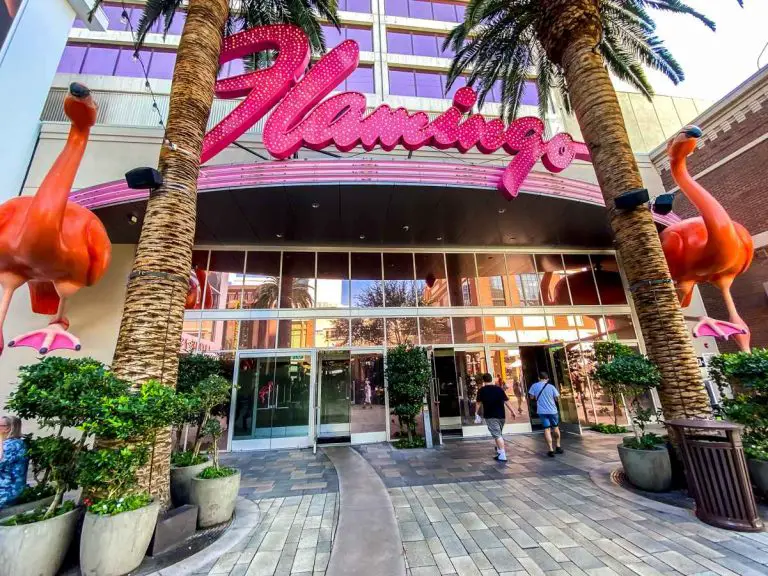Can Las Vegas Hotels Really Withstand Earthquakes: Top Tips for Quakes

So, you’re ready for a “whole lotta shakin” in Las Vegas, but how well will your Las Vegas hotel hold up in an earthquake? An earthquake while partying in Vegas might not be on the itinerary, but it’s something to consider. So, I’ve done some research, and here’s what I found.
Can Las Vegas hotels withstand earthquakes?
The Nevada state’s building codes protect your Las Vegas hotel, so they remain standing strong if an earthquake were to happen. Clark county updated its codes in the 1990s to prepare for major earthquakes, and that means all newer buildings on the Strip and throughout the city are up to code.
How do we know these buildings are safe? Where are the safest places, and what are the chances of an earthquake happening in Las Vegas? Below I’ll answer some more questions you may have about earthquakes in Las Vegas.
How Do the Hotels in Las Vegas Withstand Earthquakes?

Las Vegas is one of the top three states in the United States to be seismically active and prone to Earthquakes. This isn’t anything new, though. As mentioned, to counteract the state’s seismic activity, the government ensured that buildings and residents were secure by implementing new codes for all new construction in the 1990s.
Note: Most, if not all, of the high-rise casinos on the Strip, were built using these newer building codes.
In addition to the local government, engineers, builders, and local businesses have prepared disaster readiness plans in case of a powerful earthquake.
To be precise, in 1996, seismic resistance codes were heightened to prepare for the quakes. Since Las Vegas is in the prime fault line, the officials prepared for any and all possibilities. For this reason, most hotels and resorts on the Strip are built over code.
Codes are met by builders by several techniques:
| Foundation | Foundation depths Flexible foundation |
| Counterforce by damping | Vibrational controls Pendulum |
| Shielding from vibrations | Concrete and Plastic Rings |
| Building structure | Column reinforcement Beam reinforcement Diaphragms Moment-resisting Shear walls Cross Braces |
| (Using) Earthquake resistant materials | Structural Steel Wood “Futuristic/Innovative” Materials |
High rises are built to be able to handle extreme shaking regardless of their height. They are expected to withstand earthquakes even in the areas where fault lines intersect in the Las Vegas valley. Of course, you’ll still notice a large earthquake if you’re in your hotel or walking on the Strip, but you can feel assured that buildings and infrastructure are built to withstand the movement.
The truth is those high-rise buildings and casinos you’re walking next to tend to exceed building codes by a long shot for a good reason. They need to maintain their operations, or they’ll lose millions of tourists and gamblers!
A few days out of business would be a considerable loss for casinos and businesses, so they make sure their buildings exceed code to stay strong in any situation. Keep that in mind if you’re worried about finding a safe hotel to stay in!
Check out Clark County’s Building Codes here, where you will find more information on codes designated for earthquakes, hurricanes, and other emergency situations. Additionally, you will find some designated emergency preparedness shelters and other information here.
Are All Buildings in Las Vegas Safe During Earthquakes?
The primary point here is that the new building codes were implemented to make these new buildings safe. Even if the taller buildings seem riskier because of their height, remember it’s really all about how they were built.
If you have doubts or concerns, try to choose newer buildings when making reservations and plans in Las Vegas. You’ll find that all the big fancy casinos on the Strip have been built to withstand just about anything nature can throw at them.
Even the director of the Clark County Department of Building and Fire Prevention has mentioned that he’d feel safe going to the Strip. He suggested that he’d prefer the buildings on the Strip instead of the older areas of the town surrounding Las Vegas Boulevard, thanks to the new codes. (source)
Keep in mind these (building) codes are designed to provide the survivability of the people inside the structure. There may be some buildings that could suffer damage during these shakes and even be marked as uninhabitable afterward, but they will safeguard the people inside and ensure they are protected during an earthquake.
What Are the Chances of Earthquakes Hitting Las Vegas?

You’re ready to fill up (or drain) your wallets and have a good time, but now this idea of an earthquake is in the back of your mind. So, what are the chances of an earthquake in Las Vegas anyway? The fact is, Nevada is the third state on the list in the country for large earthquakes. Only California and Alaska have more tremors and earthquakes.
Several factors of the tectonic plates contribute to Nevada’s vulnerability. Not to mention, there are fault lines crisscrossing throughout the state.
In the past 150 years, there have been about 76 earthquakes with magnitudes of 5.5 and greater in Nevada.
Unfortunately, The US Geological Society warns residents to expect occasional quakes down the road. In the next 3 decades, there is a seven percent probability of an 8.0 magnitude or greater earthquake hitting the San Andreas fault near the Nevada state line in California.
It is expected that Nevada will continue to experience the occasional earthquake, but that being said, the likelihood of an earthquake being centered in Las Vegas is unlikely. Seismologists say there is about a 10% chance for a magnitude of 6.0 earthquake to hit the valley in the next 50 years.
Most earthquakes that hit Nevada are present along the western edge near the Sierra mountains, and in the central part of Nevada, according to UNR Seismology Lab.
The last time there was a significant “shake” was in July of 2019 due to an earthquake centered in California. This was a 7.1 magnitude earthquake that still shook Las Vegas from a hundred miles away. No significant damages or injuries were reported in Las Vegas. (source)
That’s another concern, though, why are the shakes that are supposedly so far away affecting the Las Vegas Valley? The explanation given by the UNLV Geoscience professor is that the geology of the Las Vegas area is prone to a basin effect.
When the sides are hit, the basin will jiggle like “jello” inside a container. The surrounding mountains will get the direct impact of the earthquake, but the vibrations will travel and wobble the center more than the mountains.
Reassuringly, the US has only suffered four fatalities by earthquakes in the last two decades.
How to Prepare and What to Do During an Earthquake

Now that you know the facts about Las Vegas earthquakes, you can be assured that Clark County and the local governments in and around Las Vegas have plans for any earthquakes that come our way. Government officials have coordinated with the casinos and local business owners to prepare for major earthquakes and (natural) emergencies.
Additionally, it’s always smart to be prepared yourself. Here are a few things you can do to protect yourself during an earthquake.
- First, “Drop, Cover, and Hold” (DROP to your hands and knees, COVER your head and neck with one arm and hand, HOLD on to something until the shaking stops) (source)
- Prepare or Purchase an Emergency Supply Kit (Amazon)
- Listen to announcements of managers and officials that will tell you what to do.
I don’t know about you, but I learned early on in school that standing in a doorway is the safest spot in an earthquake. Turns out that is not true. A door frame is not the safest place to be. It is much more important for you to get under a table or chair that will protect you from falling and flying objects.
If you’re inside, stay inside safely. Do not attempt to go outside.
If you’re already outside, try to move away from buildings and structures safely.
If you’re still worried, make sure to sign up for notifications from the Nevada Seismological Laboratory for updates on Nevada’s Earthquakes here.
Their data points are gathered throughout the state via numerous seismometers. These analyses are provided by the university’s researchers to keep track of Nevada’s geological activity, and they will keep you up to date with the most recent earthquakes and their magnitudes.
Building Codes in Your Area
Now that you’ve learned about some seismic activities in Nevada and Vegas check out the building codes where you live. Remember, these building codes are designed to protect you from earthquakes and any other natural disasters.
Earthquake and emergency preparedness are critical wherever you are when an earthquake hits. You should have medical kits, extra food, and flashlights prepared for all emergencies!
Why are hotel rooms cheap in Las Vegas? Find the answer in our article here.
Related Questions:
Does the San Andreas Fault run through Las Vegas? No, the San Andreas Fault does not run through Las Vegas. The San Andreas fault is in California and spans most of the length of the state. Even though the fault line is at least several hundred miles from Las Vegas at its closest point, earthquakes originating along the fault can sometimes be felt in Nevada.
Has there ever been a tornado in Las Vegas? No tornados have ever been reported to touch down in Las Vegas. Having said that, due to the sometimes extremely windy conditions in Vegas, big, swirling dust devils can form without warning. While not generally dangerous, they are a sight to behold.
Related Posts
Does it Ever Snow in Las Vegas?… Just Wait Till You See!






